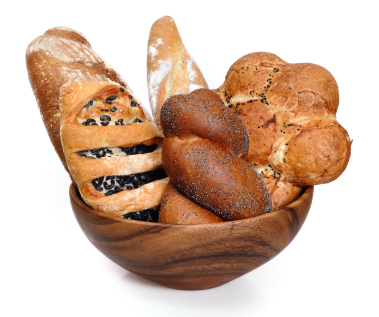FAQ
FREQUENTLY ASKED QUESTIONS
Frequently Asked Questions
Need help? Call 1800 226 180 or SMS 0429 200 622 to contact our team for answers to your questions!
General program queries
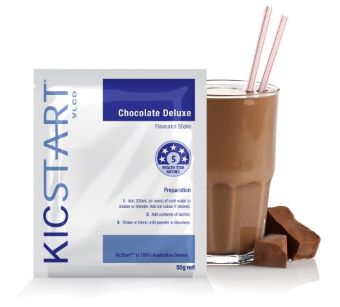 KicStart™ VLCD (stands for Very Low Calorie Diet) is a unique, high quality, nutritionally complete meal replacement that has been developed, manufactured and packaged in Australia.
KicStart™ VLCD (stands for Very Low Calorie Diet) is a unique, high quality, nutritionally complete meal replacement that has been developed, manufactured and packaged in Australia.
It can be used in:
- Meal replacement programs that replace one or two meals a day.
- Medically supervised Very Low Calorie Diet programs that replace all daily meals for the dietary management of obesity
KicStart™ VLCD has been used in multiple internationally published clinical trials that showed medically significant weight loss and health improvements across many different clinical conditions (ref 1, ref 2, ref 3, ref 4)
Importantly, the same level of weight loss has also been replicated in 'real world' Healthy Weight For Life programs with over 10,000 participants (ref).
Evidence supports low- and very low-energy meal replacement as a successful strategy for weight loss in overweight individuals (ref 1, ref 2)
There are 6 delicious KicStart™ shake flavours and 5 hearty KicStart™ soup flavours available which can be used on their own or mixed with an amazing variety of additional ‘free food’ ingredients to make an endless array of unique personalised flavours.
For variety or to jazz up your favourite KicStart™ why not try some of our serving suggestions? (view)
To view KicStart™ Ingredients, Nutritional Information and flavours, click here.
In phase 1, two KicStart™ VLCD shakes or soups replaces two meals a day, usually breakfast and lunch. The third main meal, usually dinner, is a portion controlled normal meal prepared using the Healthy Weight For Life portion planner.
In phase 2, 1 KicStart™ VLCD shake or soup replaces 1 meal a day, usually breakfast. The other 2 main meals, usually lunch and dinner, and snacks are portion controlled versions of your usual food choices prepared using the Healthy Weight For Life portion planner
In phase 3, members are transitioned to no replaced meals. A small number of KicStart™ VLCD meals are usually used to support this transition.
You will find more detailed instructions for the 3 phases of the program under Program Phases.

Use the Portion Planner Disc to prepare enjoyable, portion controlled dinners.
The Portion Planner Disc is a practical tool to help with the implementation of the Australian Dietary Guidelines.
This helps alleviate a common mistake people make with the evening meal - not including enough tasty, low energy density foods (which are usually high in fibre and water, such as salads and vegetables; and too many more energy dense foods than we need, such as meat, rice, bread, pasta and creamy sauces.
 The Lunch & Snack box has been designed to help satisfy your hunger and your energy needs throughout the day. The contents of the box, guided by the lunchbox building instructions in the HWFL Week-by-week Guide are designed to be consumed over the course of the period between breakfast and dinner and are not meant to be consumed all in one sitting.
The Lunch & Snack box has been designed to help satisfy your hunger and your energy needs throughout the day. The contents of the box, guided by the lunchbox building instructions in the HWFL Week-by-week Guide are designed to be consumed over the course of the period between breakfast and dinner and are not meant to be consumed all in one sitting.
Planning ahead and having a packed lunchbox near you during the day will help you resist the temptation to snack on high energy foods that are on offer, both out and about or in the pantry and fridge at home.
Pack your lunchbox before you leave home in the morning, or if you are usually rushing out the door with no time to spare, pack it the night before and refrigerate overnight. You will then be sure to have healthy, energy and portion- controlled food ready for your morning tea, lunch and afternoon snacks.
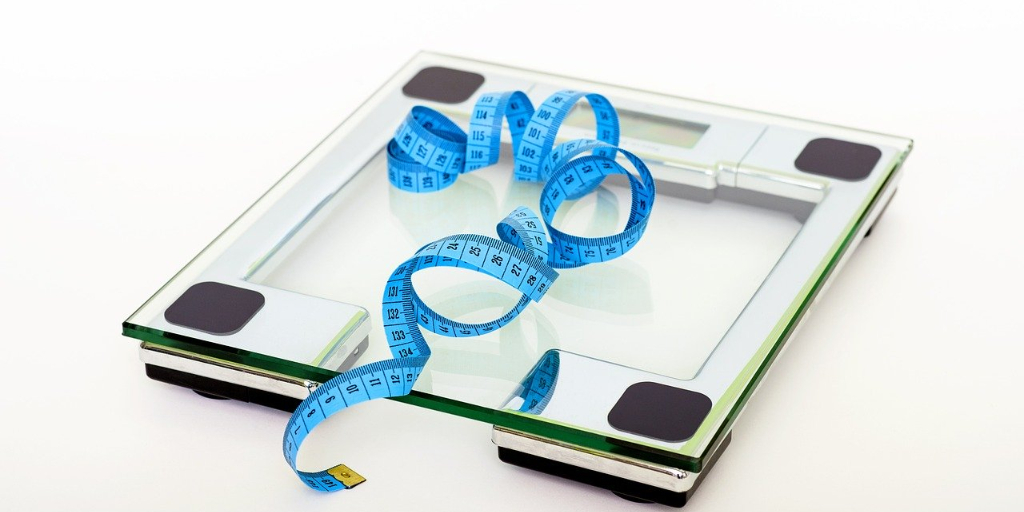 The amount of weight lost depends on a number of factors including starting weight, activity levels, compliance with the program etc. As a guide from the over 14000 members who have done this program, it is expected that if the program is followed conscientiously you should see at least a 5% reduction in your starting weight by the end of week 6 and be approaching an 8% reduction by the end of the program. However success relies on consistency and perseverance and the exact amount of weight lost varies between participants.
The amount of weight lost depends on a number of factors including starting weight, activity levels, compliance with the program etc. As a guide from the over 14000 members who have done this program, it is expected that if the program is followed conscientiously you should see at least a 5% reduction in your starting weight by the end of week 6 and be approaching an 8% reduction by the end of the program. However success relies on consistency and perseverance and the exact amount of weight lost varies between participants.
There are numerous ways of assessing the benefit of your Healthy Weight for Life™ program - you may be surprised to know that measuring your body weight is only one of them.
Some of the other ways you can assess the benefit of your healthy lifestyle program include:
- Decrease in waist circumference
- Less joint or muscle pain
- Decrease in blood pressure
- Improved blood glucose levels
- Improved cholesterol and triglycerides
- Your doctor recommending reducing or stopping some of your medications
(REMEMBER – always discuss any changes to your medication with your doctor before making changes) - Increased energy
- Improvements in personal body image and sense of wellbeing
- Decreased snoring
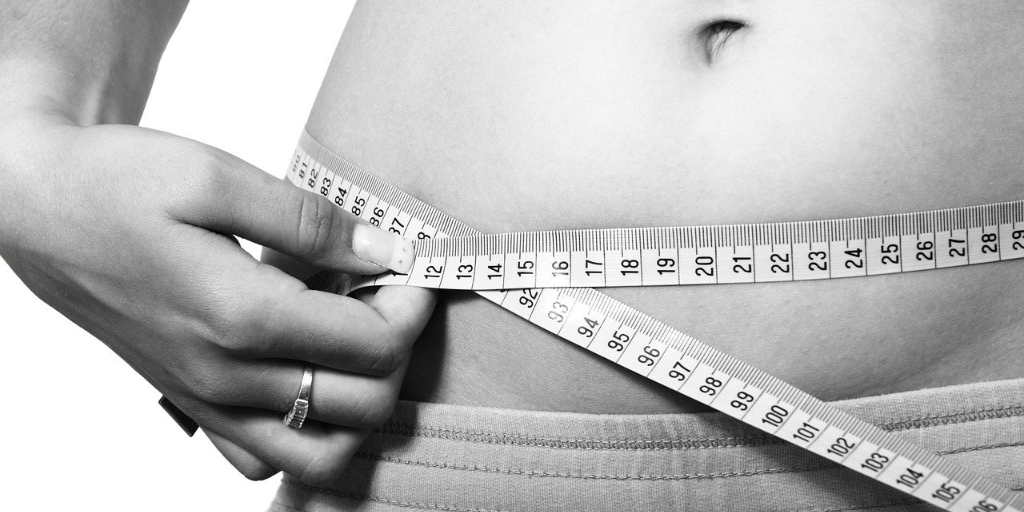 Firstly its important to recognise that there is no "normal" pattern of weight loss. Everyone loses weight at different rates and in different amounts. Sometimes the pattern of weight loss is step-wise - ie loss then plateau, then loss again. For others they lose weight only every other week. The reason we experience plateaus during any weight loss program is that our bodies are very efficient at retaining stored energy. If you find yourself in a plateau phase, you can try simply making a change to your routine, e.g. change around the meals that you are replacing (i.e. replace breakfast and dinner and have a portion controlled meal at lunchtime), try a different type of exercise, or exercise at a different time of the day.
Firstly its important to recognise that there is no "normal" pattern of weight loss. Everyone loses weight at different rates and in different amounts. Sometimes the pattern of weight loss is step-wise - ie loss then plateau, then loss again. For others they lose weight only every other week. The reason we experience plateaus during any weight loss program is that our bodies are very efficient at retaining stored energy. If you find yourself in a plateau phase, you can try simply making a change to your routine, e.g. change around the meals that you are replacing (i.e. replace breakfast and dinner and have a portion controlled meal at lunchtime), try a different type of exercise, or exercise at a different time of the day.
The point is you should not give up too soon. Patience and perseverance will show you that eventually you will achieve the weight loss you are looking for because the fundamentals of weight loss are being followed. If your energy intake is truly less than your energy ouput then you will lose weight.
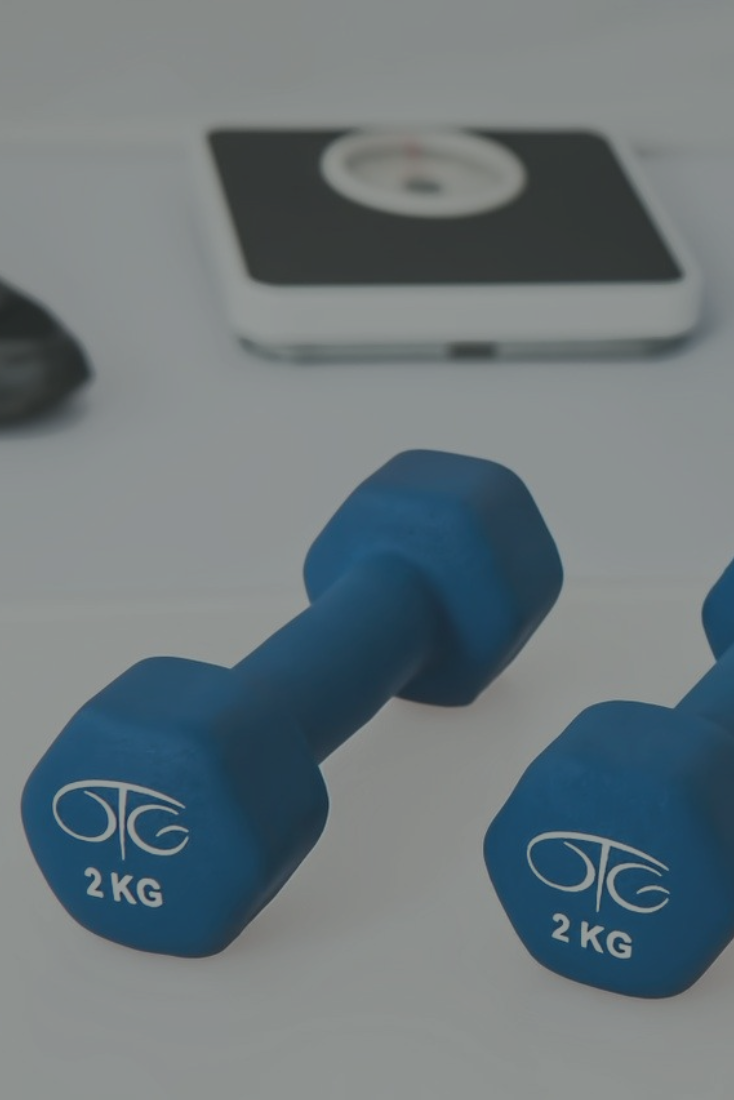 The eating plan is structured to help you achieve weight loss over the first 2 phases, while the third phase is focused on the long term maintenance of your new healthier weight. Usually the amount of weight lost in the 1st phase is greater and achieved more quickly, than the losses in the second phase as the calorie deficit is greater in the first 6 weeks due to the 2 meal replacements. So it is normal to see a slowing of the rate of weight loss as the program progresses.
The eating plan is structured to help you achieve weight loss over the first 2 phases, while the third phase is focused on the long term maintenance of your new healthier weight. Usually the amount of weight lost in the 1st phase is greater and achieved more quickly, than the losses in the second phase as the calorie deficit is greater in the first 6 weeks due to the 2 meal replacements. So it is normal to see a slowing of the rate of weight loss as the program progresses.
One other point to make is that if you are doing more physical activity than you were previously, you will probably be building lean muscle mass. Muscle takes up less space than fat. Bearing this in mind, you may notice your waist circumference reducing and your clothes fitting better but the scales haven't moved much - this usually means you are building lean muscle (helps improve metabolism & improves blood glucose tolerance) at the same time you are losing fat.
If you still feel that you would like to lose more weight, or you want to snap out of a plateau, you can purchase additional KicStart sachets at anytime to go back to a phase 1 or phase 2 style of eating for short while (if you and your healthcare professional decide that it is appropriate for you to do so) in order to reach your healthy weight goal before moving into the weight maintenance phase (phase 3).

Yes, you can change around the meals that you replace with KicStart™ to fit in with your lifestyle. E.g. for shift workers. Some people find that they need a little bit of an extra boost in the afternoon, so they have a portion controlled main meal during the middle of the day and replace their morning and evening meals with KicStart™ instead. Others have found that having a portion controlled breakfast suits their routine better and will replace the other two meals with KicStart™.
You can also move the portion planned meal around to work in with your social commitments - if you are out for lunch, then have your portioned meal then and a sachet at breakfast and dinner. Or if you are going out for breakfast with family or friends, have the portioned meal at breakfast and use your meal replacements at each of the other 2 meals. To ensure that you are selecting the correct food in the correct portion you should refer to the relevant guidelines in your Week by Week Guide book. As you move through the program, gradually you will reduce the number of meals replaced with KicStart™ as you build up new healthy eating and lifestyle habits.
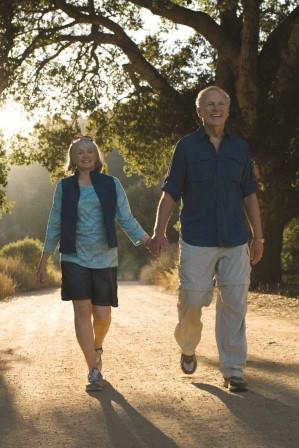
Generally we don’t suspend the program due to travel, as one of the aims of the program is to help you to make mindful choices in the context of everyday life, which does involve trips, birthdays, illness etc.
So while you may not be able to keep the weekly chart updated, or be using the KicStart sachets while away, you should still be able to be monitoring your food portion sizes and looking for opportunities to remain active. On your return you will be able to “catch up” if you haven’t been using the sachets while away, and generally we suggest weight maintenance as the aim while traveling anyway. The aim of the program is to really consolidate some healthy habits, and to ensure that as you return to your regular meals, rather than the VLCD sachets, that you are able to maintain what you have already lost for long term stable weight management. So going away is a great time to “test” your new skills and knowledge.
In most instances due to the simplicity and ease of preparing a KicStart™ to replace a meal, many find they are able to continue their program even whilst away or overseas, whether for holidays or for business. The website is accessible from anywhere provided you have access to an internet connection.
For those who feel it will be impossible to follow the structure of the program whilst away from home, or had any queries at all about how to adjust the structure of your program to suit your schedule, you can contact the Healthy Weight For Life team to notify them of your plans and they can assist you to make a suitable strategy.
 Shift work really can be difficult in terms of sticking to regular meals. If you are working nights and sleeping during the day, then when you come off night shift you will need to eat something that is sustaining but that also helps you to get a good amount of sleep during the day.
Shift work really can be difficult in terms of sticking to regular meals. If you are working nights and sleeping during the day, then when you come off night shift you will need to eat something that is sustaining but that also helps you to get a good amount of sleep during the day.
Eating a large meal close to bed time may cause sleep disturbances for two main reasons:
- large meals can cause increasing circulation, secretion of gastric acid, pancreatic enzymes and liver bile-salts and increasing
activity in the gut muscles. With all these things going on, it can be difficult to go to sleep.
- laying down soon after eating a meal means that gravity may make the food go back up from your stomach causing reflux and indigestion.
On the other hand, going to bed feeling hungry may also prevent you from getting to sleep or may cause you to wake earlier than planned. So what can you do to help you get a good “day’s” sleep and maintain your weight?
Meal type
 It is often promoted that foods high in carbohydrate make you drowsy because they increase the uptake of the amino acid tryptophan by the brain. Tryptophan is a chemical that can work together with another important brain chemical called serotonin, to help promote a calming effect and sleepiness. So these choices are good for after a night shift, and hour or two before trying to sleep.
It is often promoted that foods high in carbohydrate make you drowsy because they increase the uptake of the amino acid tryptophan by the brain. Tryptophan is a chemical that can work together with another important brain chemical called serotonin, to help promote a calming effect and sleepiness. So these choices are good for after a night shift, and hour or two before trying to sleep.
Foods rich in protein increase production of noradrenaline, a hormone that increases alertness and reduces fatigue so these are good choices for before or during your shift.
Meal size
Avoid eating large portions of food servings within 1-2 hours of lying down to sleep, especially foods that are high in protein and fat, such as meat, bacon, eggs and fried foods. These foods take longest to digest, causing indigestion or keeping you awake.
If you are hungry immediately before bed, eat a small snack. A milk-based drink may help you sleep and will stop you waking up because of hunger.
Meal timing
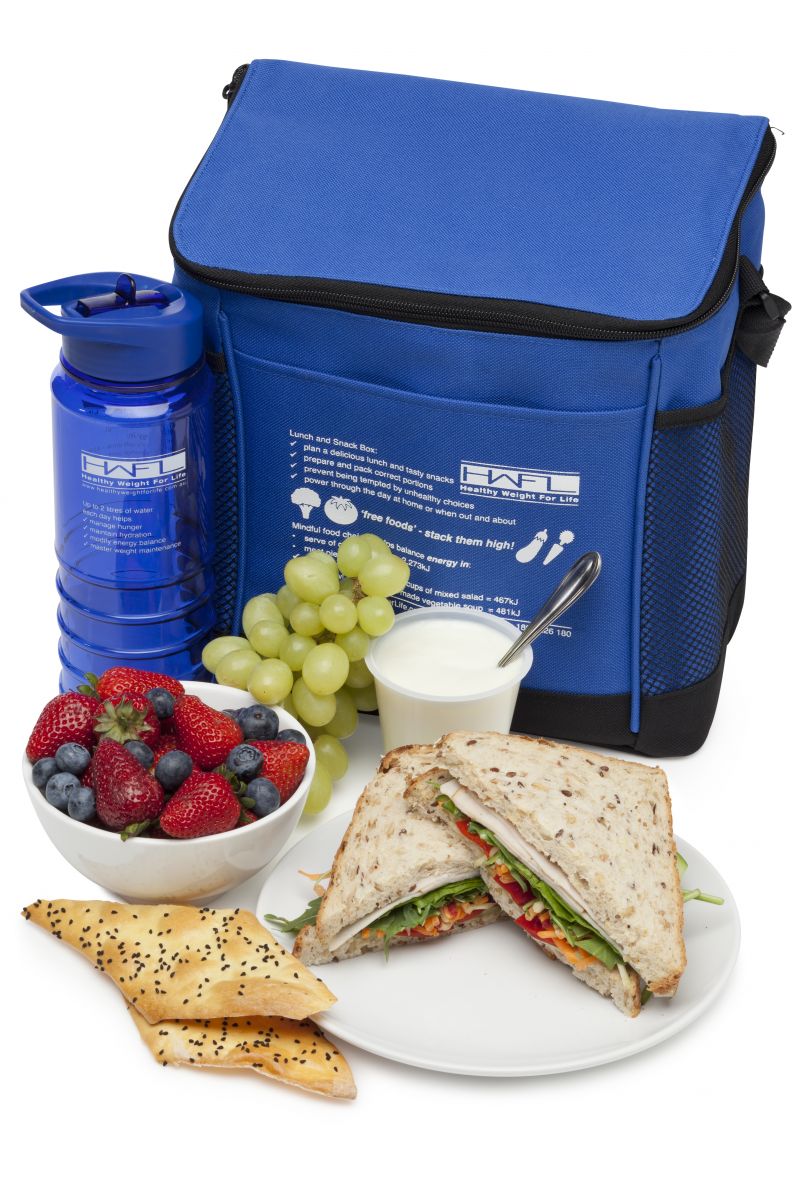 Break your fast every day - eat a meal within 1 hour of waking. For those that don’t like traditional breakfast options or are pushed for time this doesn’t have to be a big sit down meal. It could be a KicStart™, a fruit smoothie, or a piece of fruit and a tub of yoghurt.
Break your fast every day - eat a meal within 1 hour of waking. For those that don’t like traditional breakfast options or are pushed for time this doesn’t have to be a big sit down meal. It could be a KicStart™, a fruit smoothie, or a piece of fruit and a tub of yoghurt.
Eat something from the contents of your lunch box (lunch and snacks) every 2-3 hours during your waking hours. If working night shift, aim to eat your main meal between 5pm and midnight.
You should not go more than 12 hours without eating whilst awake. Doing so will make you feel lethargic and possibly sleepy.
Have a well balanced meal including some protein and some low GI carbs 1-2 hours before going to sleep after doing shift work.
Food, drink and physical activity queries
Carbohydrates or ‘carbs’ have been copping a bad rap of late. Many people think only of white rice, potatoes and pasta but that's only a fraction of what’s available. There has been a tendency to demonize all carbohydrate-containing foods because of the poor health effects of just some of their processed counterparts.
Click here for information on carbohydrates and their role in a healthy diet
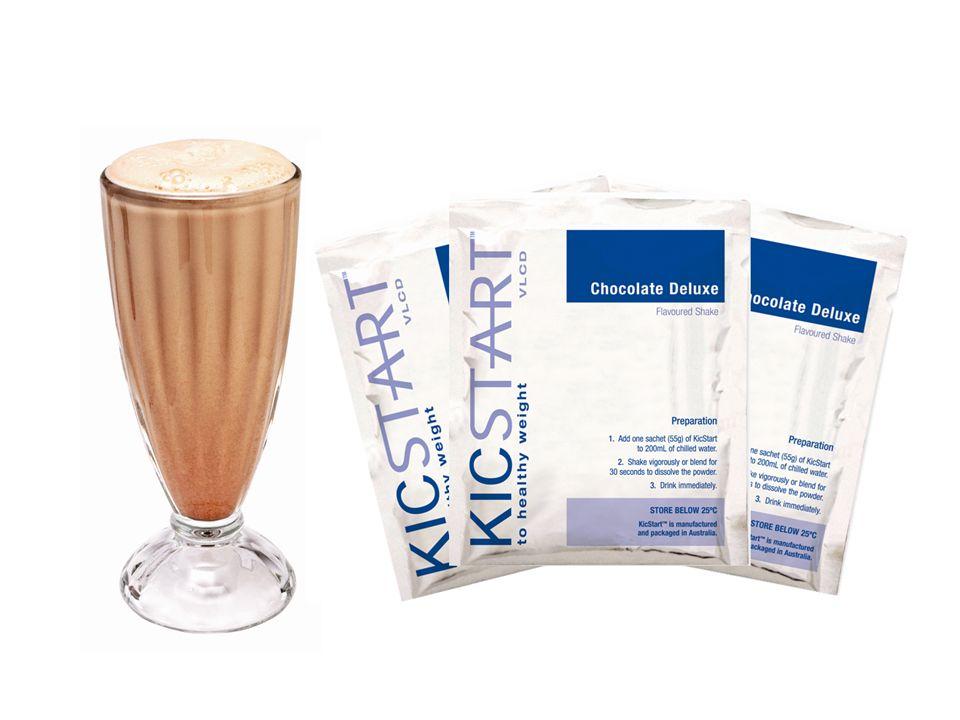 There is a common misconception that skipping meals will help with weight loss. This is simply NOT TRUE.
There is a common misconception that skipping meals will help with weight loss. This is simply NOT TRUE.
In fact, skipping meals usually leads to weight gain because:
- Your metabolic rate slows
- Your blood sugar drops
- You have less energy
All of which leads to impulsive snacking often on high-fat sweets or extra servings or bigger portions when you do finally eat a meal. This is particularly true when skipping breakfast.
If you find you are often "too busy" to eat, keep a KicStart™ sachet and a shaker ready in your desk at work or pack them in your suitcase or handbag. All it takes is a minute to prepare a quick, yet nutritious and filling shake that will keep your weight loss efforts on track.

Have a drink of water
Often people confuse thirst for hunger so try having a drink of water to see if that helps manage your hunger. You could also try one of the 'free drinks' listed.
If the distractions and a drink of water or another 'free drink' do not reduce the desire to eat after 15 minutes then you can use your imagination to prepare a 'guilt free' tasty snack from the 'free foods' list.
Distract yourself

If you feel that you are hungry the first approach is to try and distract yourself for 15 minutes - for example you could:
- Play with a pet
- Go for a short walk outside
- Phone a friend for a chat.
 The program is designed to address old eating habits that no longer serve you and replace them with a healthy approach to eating.
The program is designed to address old eating habits that no longer serve you and replace them with a healthy approach to eating.
If you want to achieve this you will need to change some of the things you have been used to doing (habits). Adding sweet treats cancels out any benefit from using the meal replacements.
Sugar cravings are very real, but they can be managed and reduced – as with many addictions you can go “cold turkey” if you are feeling strong, or wean off gradually. If you can identify the time you are craving the sugar and also what action you usually take (eg a sweet treat after dinner every night), this is the first step to making a change. Interestingly a recent study has shown that a 15 min walk will produce a similar feel good “rush” as eating chocolate would stimulate in the brain, hence the cravings get easier to resist. So give that a go if you can.
There are some sweeter choices that can be eaten in moderate portions in the breakfast and lunch plans (eg yoghurt, plain sweet biscuits such as milk arrowroot,sweeter fruit) or you can choose sweet things that use sugar-substitutes (eg diet jelly) so that you get the sweetness without the calories, or you can work on reducing the craving by not feeding it, by distracting yourself, and also counteracting with a savoury or neutral taste.
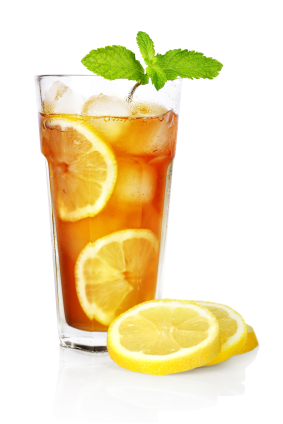
Some suggestions include:
- Green tea or licorice tea
- Water with lemon wedge
- a small savoury snack (from the Free Food list – see the recipe section for some ideas)
- have some air-popped popcorn or a punnet of strawberries
- Chew sugar-free gum
- Go for a walk
- Phone a friend
- Gardening or other activity to keep your hands busy
- Identify if there is an emotional trigger and plan alternate strategies
Even artificial sweeteners can still trigger sugar cravings so it's better to try gradually weaning yourself off natural sugar rather than swapping it for artificial substitutes where possible. As you gradually switch out the more refined carbs for whole choices, your taste buds adjust, and you’ll likely find yourself craving less sweet things.
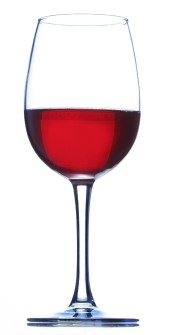 Alcoholic drinks do contribute to the overall energy intake for the day which shouldn't be overlooked when you are trying to lose weight. Alcohol is high in energy (kilojoules) and of little nutritional value. In addition, in some people alcohol can stimulate appetite and/or reduce inhibitions leading to more food being eaten than initially intended.
Alcoholic drinks do contribute to the overall energy intake for the day which shouldn't be overlooked when you are trying to lose weight. Alcohol is high in energy (kilojoules) and of little nutritional value. In addition, in some people alcohol can stimulate appetite and/or reduce inhibitions leading to more food being eaten than initially intended.
In Phase One it is preferable that, if possible, you avoid alcohol entirely to give you the best chance of actual weight loss. If you do choose to have a drink of alcohol during Phase One we suggest that you try to counteract the extra energy intake with some extra activity. As an indication, the energy in 1 full strength beer or an average glass of wine would have to be balanced with an extra 30 minute walk (approximately).
During Phases Two and Three and in the long term, alcohol should be considered an “extra” and the additional calories off-set by increasing your activity where you can.
If you would like some more information on safe alcohol consumption you can refer to the National Guidelines for Alcohol Consumption.
We recommend that members should aim to increase their incidental activity during the day PLUS a planned period of physical activity every day. If this is not something you are already capable of, just start with a comfortable 5 or 10 minute walk on a flat surface. Aim to increase this every few days until you have built up to 3 x10 minute walks each day during phase 1. By the end of phase 2 there is an expectation of regularly achieving 30 mins of physical activity or 10000 steps per day on a wearable device eg Fitbit, Garmin or Apple watch. This level of activity should continue throughout phase 3 & beyond.
What kind of activity should I do?
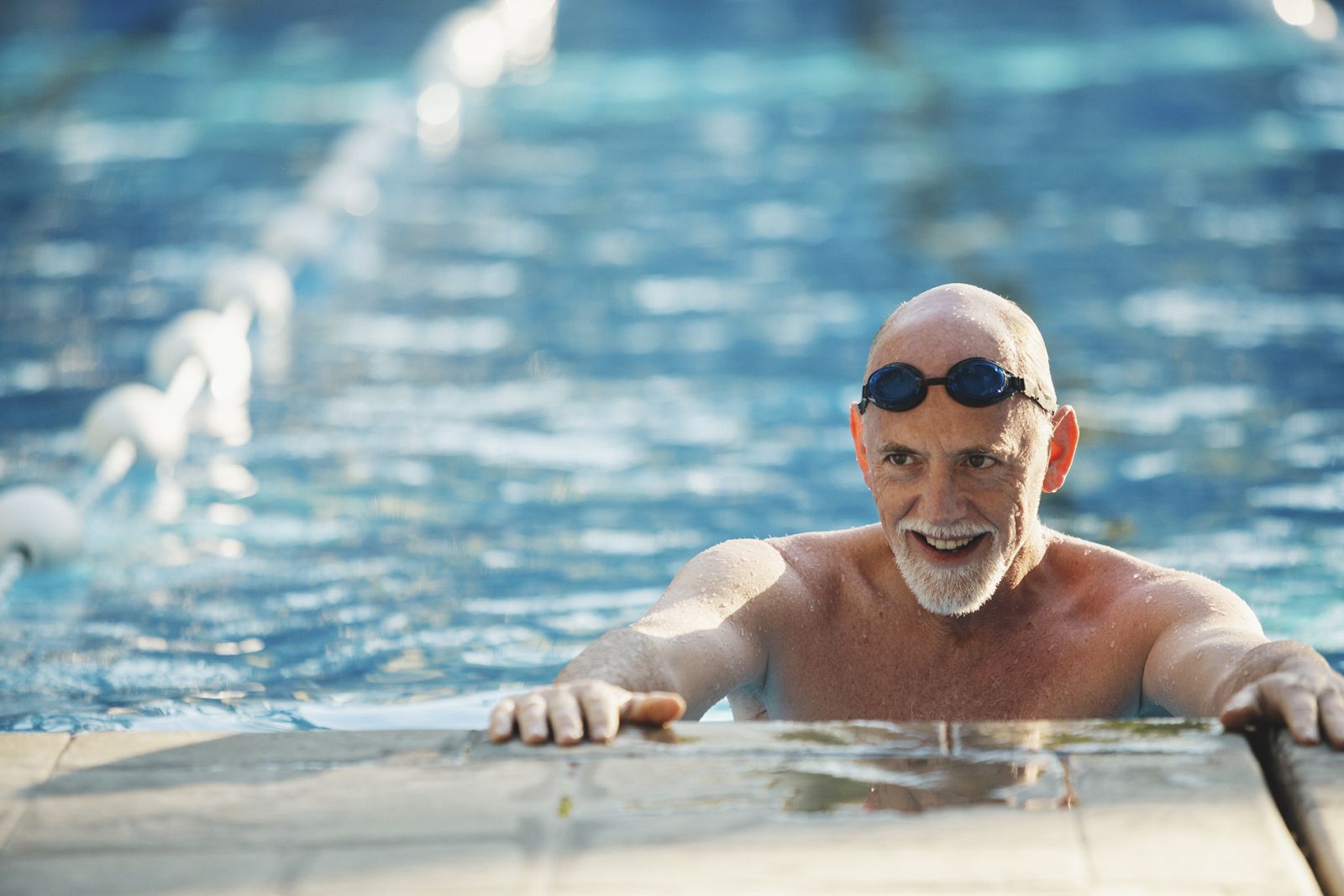 Some people may find walking too painful on their joints, and so we recommend that you find alternate options that suit you and that you find fun. Examples include swimming, cycling, yoga, pilates, taichi, dancing, rowing, and so forth.
Some people may find walking too painful on their joints, and so we recommend that you find alternate options that suit you and that you find fun. Examples include swimming, cycling, yoga, pilates, taichi, dancing, rowing, and so forth.
Active living doesn’t require excessive motivation or discipline nor does it have to include a rigid exercise regime. With a little planning and imagination, becoming more active can be easy and enjoyable - even fun! Any chance to be more active should be seen as an opportunity not a chore.
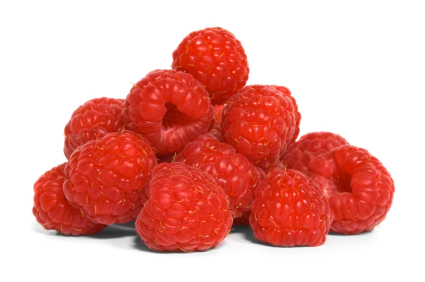
Whole pieces of fruit (NOT fruit juice) are an important part of a long term healthy diet however they do contribute to your overall energy intake. During phase 1, the Motivational Weight Loss Phase, it is preferable to limit your snacks to 'free foods'.
Information about fruit can be found in phase 1 page 8 of your Week by Week guide. The free food list is designed to incorporate all the foods you can be having between meals that will not have a negative impact on your program. If a food is not listed there it is safe to assume we do not want you to be eating it in phase one. We will introduce more fruit in phase 2 but at this point berries are what is recommended because of their lower sugar content. For longer term thinking we follow the Australian Dietary Guidelines recommendation of 2 serves of fruit per day.
Health conditions, medication and potential side effects
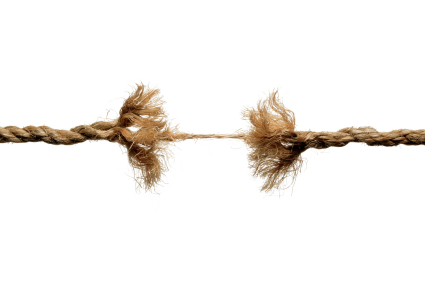 Recent clinical data indicates a strong relationship between stress, obesity and ill health. Short, sharp reactions to acute stressors such as an argument with a friend or family member or problems with work that are quickly resolved and forgotten about, will cause no permanent harm and the body is well designed to cope with this type of situation.
Recent clinical data indicates a strong relationship between stress, obesity and ill health. Short, sharp reactions to acute stressors such as an argument with a friend or family member or problems with work that are quickly resolved and forgotten about, will cause no permanent harm and the body is well designed to cope with this type of situation.
However an inappropriate and prolonged (chronic) stress response where you feel unable to cope and continually on edge, results in an excessive and continual secretion of stress hormones. These hormones, via a complex relationship with other chemicals, can exert a wide range of effects on various tissues and organs of the body, but most specifically in relation to body weight, they can cause increased visceral (tummy) fat deposition and a decrease in your lean muscle mass over time. Both of these situations are deleterious to long term health.
You may not be able to avoid situations that cause you stress, but what you can do is find strategies to make sure your reaction to the stressor doesn’t affect your health or your weight.
Many who have lost weight only to regain it later tend not to allow themselves to confront problems directly and are much more likely to turn to food or drink in response to emotional distress. Conversely people who have successfully achieved a lasting weight loss have been able to learn how to face problems head on and use problem solving strategies to overcome the hurdles everyday life presents to them.
The development of problem solving skills is particularly helpful at times when you are dealing with emotional distress so you don’t revert to old unhealthy habits.
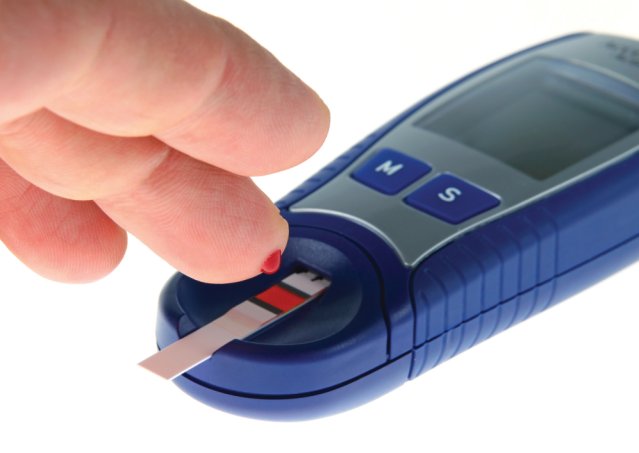
Many people living with type 2 diabetes have greatly benefited from completing this program, some have even been able to reduce their diabetes medications. Weight loss has been shown to markedly reduce cardiovascular risk in people with type 2 diabetes and in some cases results in total remission of the disease.
The eating plan used in this program has been reviewed by some of Australia’s leading endocrinologists, diabetes educators and dietitians to ensure it is appropriate for people with type 2 diabetes and that it reflects current best practice.
KicStart™ itself has been used very successfully in a published independent clinical trial in type 2 diabetic patients in addition to the many years where it has been used as a highly effective weight loss tool in the Healthy Weight For Life Diabetes program (ref 1, ref 2, ref 3).
As with any weight loss program, people with diabetes may need to monitor their blood glucose levels more frequently and carefully throughout the program because any calorie reduction and weight loss should result in a reduction in blood sugar and you therefore may need dosage adjustments made to your medication in order to avoid sugar levels dropping too low.
(NB. It is important that you not alter the dosage of your medication without consulting your GP or diabetes specialist first.)
Those living with Type 1 diabetes should check with their endocrinologist or GP before using KicStart™ or commencing any weight loss program.
Whilst the program has been designed to assist participants optimally manage their health, it does not replace the advice given directly by your own supervising healthcare professional or medical practitioner.

Very rarely people may have certain allergies to specific ingredients in KicStart™. If you have a known allergy, please review the list of ingredients for KicStart™.
If an allergic reaction is suspected, you should stop taking KicStart™ immediately and discuss your symptoms with your pharmacist or doctor and let your Healthy Weight Fior Life Support Team know.
For those who find after commencing the program that they do perhaps have an allergy or intolerance to the KicStart™ VLCD products, the HWFL Essentials Program is a good option going forward as this allows you to continue to participate and receive the other health benefits of the lifestyle modification and behaviour change strategies.
Gluten
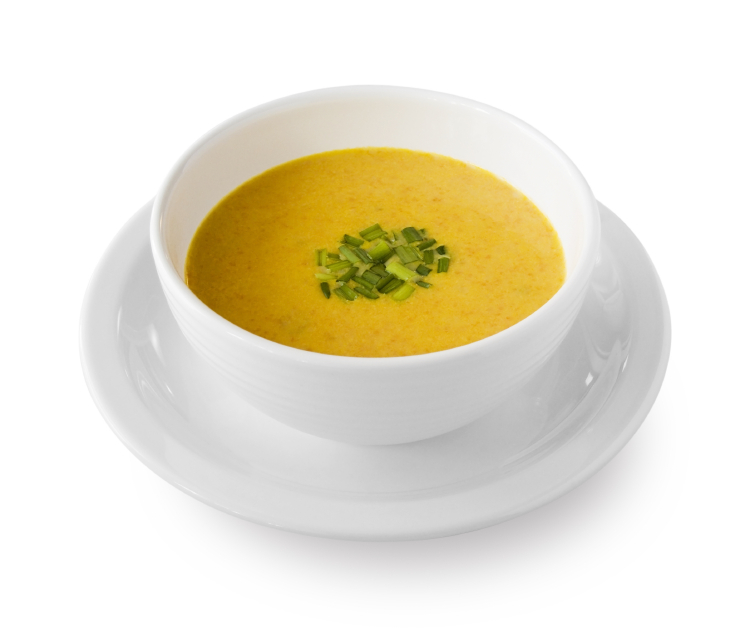
For those diagnosed with coeliac disease, all the KicStart™ shakes as well as the Asian Beef, Italian Tomato and Pea&Ham soups have been tested to a sensitivity of 5 ppm - (parts per million) - and the gluten content was found to be undetectable.
The Pumpkin & Herb and Creamy Chicken KicStart™ soups however do contain gluten (detectable at 80ppm) and should not be used by those with a gluten intolerance or allergy.
Due to legal requirements of food manufacture, as some of the trace ingredients of KicStart™ are sourced from products that may contain gluten we are obliged to warn of the possibility that the powder may contain traces of gluten. However we have had a number of people with coeliac disease use KicStart™ shakes quite successfully.
Soy
All of the shakes contain similar amounts of soy with a range of 3.8g to 4.1 g/serve. The soy content of KicStart soups vary from 5.2 to 20.5 g/serve. The Pea & Ham soup does not contain any Soy.
Sodium

High dietary intake of sodium leads to high blood pressure and reducing salt in your diet can reduce your blood pressure, however its also important to increase your physical activity levels, control your weight and manage your stress. To reduce blood pressure and lower your risk of heart disease, the Heart Foundation recommends adults consume less than 2400 mg of sodium a day in their food and drink.
KicStart products do contain some sodium but it's important to remember that each sachet represents an entire meal so as you are mixing this with water the amount listed is therefore the total sodium for that whole meal.
Those with pre-existing high blood pressure, are recommended to reduce their intake to 1600 mg of sodium per day, but you should always discuss with your doctor or health practitioner what’s right for you.
 As the program is conducted over a period of approximately 18 weeks, participants will need to take medications, either their regularly prescribed existing medications or a short course of antibiotics for example.
As the program is conducted over a period of approximately 18 weeks, participants will need to take medications, either their regularly prescribed existing medications or a short course of antibiotics for example.
As KicStart™ is formulated as a food for special medical purposes, and is literally a nutritionally complete meal albeit in the form of a shake or soup, there is no reason you would need to alter how you take any tablets that you would have normally taken "with food". If you have any concerns, speak with your pharmacist or GP.
Any pre-existing regular medications you take should be closely monitored during the course of the program and where dosage adjustments are needed these should be handled by consulting with your supervising healthcare provider as soon as possible if you have any concerns. However if you still have a query about the program and how it relates to a medical condition you have or certain medications you are taking, please contact the Healthy Weight for Life Team and ask to speak with the pharmacist on staff about your concerns.
Sometimes people using a VLCD meal replacement product can experience short term constipation.
As such, during the Healthy Weight For Life™ program it is important to:
- Take preventative steps to reduce the risk of developing constipation
- Be aware of your normal bowel habits and act early if you notice you are needing to open your bowels less than usual.
- If you become constipated don’t ignore it, take action as soon possible
- Speak to your doctor or pharmacist if symptoms persist, if faeces are bloodstained or black and tar-like, if you have other symptoms such as a headache, fever or pain.
For more information, click here.
Osteoarthritis queries
 Osteoarthritis (OA) is a highly prevalent, disabling disease which places a tremendous burden on affected individuals as well as private and public health budgets.
Osteoarthritis (OA) is a highly prevalent, disabling disease which places a tremendous burden on affected individuals as well as private and public health budgets.
Osteoarthritis is a chronic condition of the synovial joint – most common type of movable joint in the body. The disease develops over time and most commonly affects the knees, hips and hands, and less commonly the shoulder, spine, ankles and feet.
For individuals, the physical and emotional impact of osteoarthritis can have a major impact on their life. Common physical symptoms include pain, stiffness and loss of function in the affected joint. For many this can make everyday activities difficult; such as going up and down stairs, getting in and out of a car or putting on socks / stockings.
The emotional impact of osteoarthritis can also be profound. Living with chronic pain and reduced mobility often restricts a person’s ability to participate in hobbies and social events which can have negative consequences for quality of life and mood.
In Australia osteoarthritis is the underlying diagnosis of 97% of all total knee replacement procedures and 89% of all total hip replacement procedures.
More information on the onset, progression and treatment of osteoarthritis
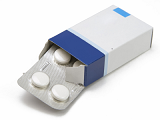 There are a number of medicines your doctor may choose to recommend for you and their choice of medications will depend on how severe your pain is, any other medicines you might be taking, and any other health conditions you may have. Often they will recommend a combination of medications to best treat both the pain and inflammation that is associated with OA.
There are a number of medicines your doctor may choose to recommend for you and their choice of medications will depend on how severe your pain is, any other medicines you might be taking, and any other health conditions you may have. Often they will recommend a combination of medications to best treat both the pain and inflammation that is associated with OA.
Examples of such medications include:
- Paracetamol
- NSAIDs (Non-Steroidal Anti-Inflammatory Drugs)
- Opioids
- Injections
- Anti-inflammatory creams and gels
- Complementary medicines
More information on pain relieving medications and pain management
 Osteoarthritis of weight bearing joints such as the knees and hips can be quite painful and the temptation is to avoid movement in the hope that this will alleviate the pain. In actual fact, the opposite is true and the gold standard of treatment recommends keeping the joints moving to alleviate pain.
Osteoarthritis of weight bearing joints such as the knees and hips can be quite painful and the temptation is to avoid movement in the hope that this will alleviate the pain. In actual fact, the opposite is true and the gold standard of treatment recommends keeping the joints moving to alleviate pain.
Some of the recommended non-medicated pain management strategies for OA include:
- Reduce weight
- Exercise
- Stress management and relaxation techniques, including breathing exercises
- Physical measures such as thermotherapy and strapping
 The aim of having a joint replaced is to relieve the severe pain and restricted movement that accompanies the deterioration of a weight bearing joint, most commonly as a result of osteoarthritis. Joint replacement operations are very effective for most people with severe osteoarthritis however any surgery poses risks so a replacement should be considered only when other non-surgical treatments e.g. weight loss, exercise, medications, etc. no longer bring sufficient relief.
The aim of having a joint replaced is to relieve the severe pain and restricted movement that accompanies the deterioration of a weight bearing joint, most commonly as a result of osteoarthritis. Joint replacement operations are very effective for most people with severe osteoarthritis however any surgery poses risks so a replacement should be considered only when other non-surgical treatments e.g. weight loss, exercise, medications, etc. no longer bring sufficient relief.
More information on joint replacement surgery with answers to common questions

